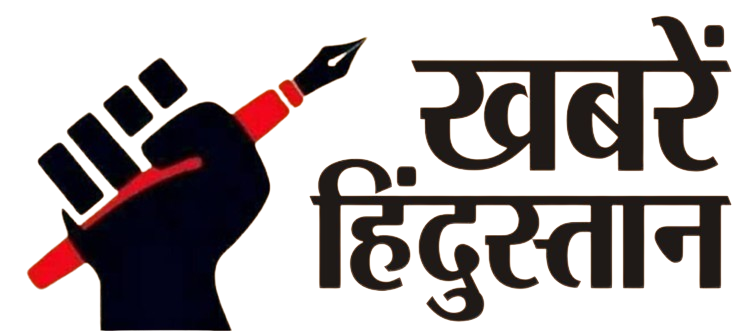Introduction
The Supreme Court of India has delivered a significant ruling on the Delhi stray dogs issue, sparking widespread debate over animal rights vs. human safety. A two-judge bench last week observed that stray dogs must be shifted to shelters within eight weeks, triggering concerns among animal activists and residents. Today’s verdict aims to balance the safety of citizens in Delhi-NCR with the welfare of stray animals.

Why the Supreme Court Took Up the Stray Dogs Case
The case was brought to the court following rising incidents of stray dog attacks in Delhi-NCR, which raised questions of public safety, health, and urban management. Several petitions were filed demanding strict guidelines on stray dog population control, vaccination drives, and relocation measures.
Key reasons for the court’s intervention:
- Rising stray dog attacks in residential colonies and near schools.
- Lack of proper animal shelters and management policies.
- Conflicts between animal welfare groups and resident associations.
- Concerns over rabies cases and poor vaccination coverage.
Supreme Court’s Observation Last Week
Last week, the Supreme Court bench made a strong observation:
- All stray dogs in Delhi-NCR should be shifted to shelters within 8 weeks.
- The government and municipal bodies must ensure safe relocation and vaccination.
- Human lives and safety cannot be compromised, but the solution must respect animal rights.
This interim direction led to heated debates among NGOs, municipal corporations, and residents.
Reaction from Animal Welfare Groups
Animal rights activists have expressed concern that mass relocation may lead to cruelty and overcrowding in shelters. They argue that:
- The Animal Birth Control (ABC) Rules allow stray dogs to live in their original territories after sterilization and vaccination.
- Removing dogs from their local areas could create territorial vacuum, leading to new unsterilized dogs entering.
- Shelters may become overburdened and unhygienic, risking both animals and caretakers.
Public Safety Concerns in Delhi-NCR
On the other hand, residents’ associations and parents welcome the Supreme Court’s decision. Many reported:
- Increasing dog bite incidents near schools, parks, and residential colonies.
- Lack of municipal action despite repeated complaints.
- Fear among children and elderly due to stray dog packs in colonies.
This verdict is seen as a relief for families demanding stricter action to ensure safer public spaces.
Delhi Government and MCD’s Responsibility
The Supreme Court made it clear that the Delhi government, NDMC, and MCDs must:
- Build modern animal shelters with adequate food, water, and veterinary care.
- Conduct mass sterilization and vaccination to control the population.
- Collaborate with animal welfare NGOs to avoid cruelty.
- Maintain transparent reporting systems for citizens to track progress.
What Happens Next: Implementation Challenges
While the verdict sets a clear roadmap, implementation will not be easy.
- Infrastructure gaps: Delhi currently lacks enough shelters for thousands of stray dogs.
- Budget constraints: Municipal bodies are already struggling with funds.
- Legal challenges: NGOs may move court again if relocation violates animal rights laws.
- Public cooperation: Residents must follow rules and avoid cruelty.
Balancing Human Safety and Animal Rights
The ruling highlights the sensitive balance between ensuring public safety and upholding animal welfare.
- Human safety must be prioritized, especially for children and elderly.
- At the same time, dogs should not be killed or mistreated.
- A scientific approach with sterilization, vaccination, and structured shelters is key.
10 Key Points from the Supreme Court’s Stray Dogs Verdict

Here are the top 10 takeaways from today’s ruling:
- The three-judge bench has taken over the matter after massive protests against the August 11 order.
- The court acknowledged the rising cases of dog bites and rabies deaths as a serious public health crisis.
- Authorities must create shelters for at least 5,000 stray dogs with proper care facilities.
- Shelters must employ trained staff knowledgeable in animal care, vaccination, and sterilisation.
- The Delhi government has been directed to immediately start the process of relocating stray dogs.
- Animal activists’ concerns about cruelty and overcrowding were noted, but the bench stressed public safety comes first.
- No culling of dogs will be allowed; relocation must follow humane practices.
- A larger monitoring committee will be set up to ensure transparency in shelter management.
- The court admitted that infrastructure gaps in NCR cities are a major challenge.
- Periodic status reports must be submitted to the Supreme Court for accountability.
Divided Reactions: Activists vs. Public Safety Advocates
Animal Welfare Groups’ Stand
Animal activists and NGOs argue that:
- Relocation is cruel, ineffective, and expensive.
- The Animal Birth Control (ABC) Rules already mandate sterilisation and return of dogs to their original territory.
- Relocating stray dogs may cause a territorial vacuum, allowing new unsterilised dogs to enter.
- Delhi lacks the infrastructure to house thousands of stray dogs.
Many fear that the relocation plan could turn into a backdoor culling exercise or lead to disease outbreaks in overcrowded shelters.
Residents’ and Citizens’ Perspective
On the other side, citizens and Resident Welfare Associations (RWAs) welcomed the order:
- Rising dog attacks on children and elderly have created fear in housing societies.
- Parents are worried about school-going children’s safety.
- Residents say authorities have been negligent in controlling the stray population for years.
For them, the Supreme Court’s intervention brings hope of safer public spaces.
Political and Celebrity Debate
The stray dog verdict has become a polarising issue nationwide:
- Politicians have voiced contrasting opinions—some calling it necessary for urban safety, others defending animal rights.
- Celebrities, sportspersons, and actors joined the debate on social media, making it a mainstream issue.
- Heated arguments have highlighted how dog bite cases and stray population growth are both a civic and humanitarian crisis.

Challenges Ahead for Delhi Government and MCD
Implementing the Supreme Court’s directions will not be easy.
Key challenges include:
- Lack of shelters: Current facilities cannot accommodate the huge stray dog population.
- Budget strain: Setting up and maintaining shelters will take a large share of civic budgets.
- Staff training: Shortage of skilled handlers and veterinarians.
- Timeframe: The 8-week deadline may be too short for large-scale relocation.
Unless long-term sterilisation and vaccination drives are ramped up, experts say relocation alone may not solve the problem.
Public Health vs. Animal Rights: The Balancing Act
The case represents a classic clash between human safety and animal rights.
- Public health data (over 37 lakh dog bites, 54 rabies deaths) shows urgent need for action.
- Yet, animal welfare laws protect stray dogs from being killed or displaced unlawfully.
- A hybrid approach of sterilisation, vaccination, and phased sheltering could be the middle ground.
Conclusion
The Supreme Court’s big order on Delhi stray dogs is a landmark step in addressing an escalating urban crisis. With rising cases of dog bites and rabies, the court has chosen to prioritise public safety while mandating humane relocation and shelter creation.
The coming weeks will be crucial as the Delhi government, MCD, and NGOs face the daunting task of implementing these measures. Whether this ruling brings safer streets or deeper controversy will depend on execution, transparency, and the balance struck between human welfare and animal rights.






